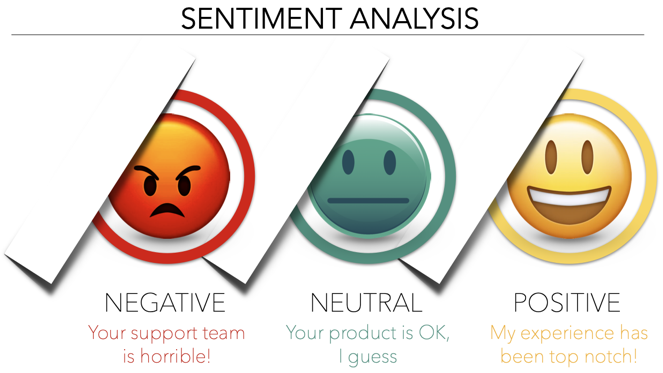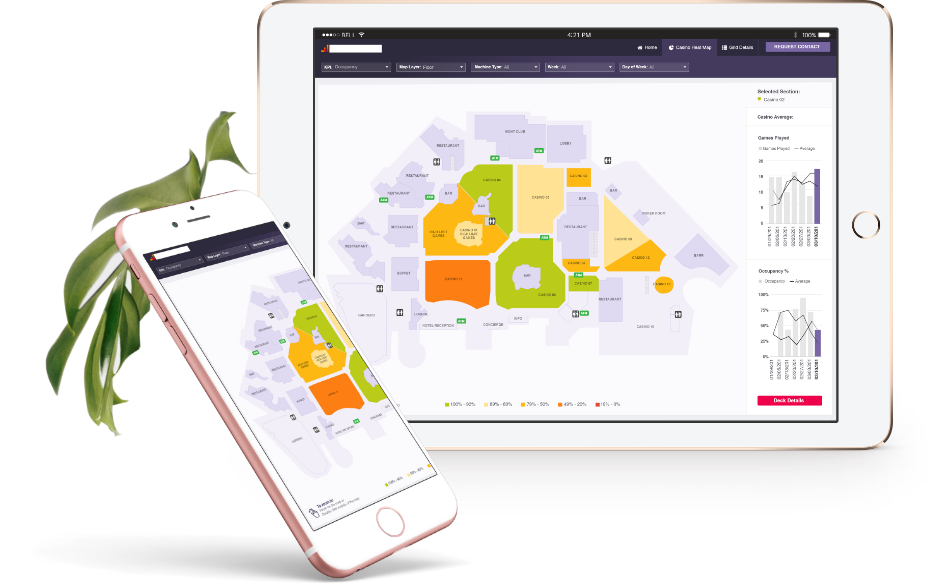Crisis Preparation using Artificial Intelligence

By Roger Lefort, PhD, Principal Data Scientist, Analytics Intell
Predicting the next Black Swan
One of the biggest threats to businesses and governments today is the uncertainty of what risks awaits. How do you respond to a future crisis if you don’t know what to prepare for? While Black Swans are impossible to predict, we can be sure of two things: they will happen and they will have significant economic and societal consequences.
Popularized by Nassim Nicholas Taleb, writer and former Wall Street trader, the Black Swan remains one of the most intriguing problems in modern cognitive psychology and business. The Black Swan describes a completely random event or phenomenon that is far beyond what would normally be expected, carrying a severe and disproportional economic and societal impact. This concept is strikingly familiar today, as the world deals with perhaps the latest Black Swan, the 2020 coronavirus pandemic.
To truly be characterized as a Black Swan, the event must satisfy three criteria, as explained by Taleb. First, it must be extremely rare and an outlier, and remain outside the realm of normal expectations. Second, its occurrence carries a major impact. Third, after its occurrence, human nature leads us to try to rationalize the event by hindsight.
Human history is framed by a number of small and major Black Swans – some positive, such as the invention of the Internet, and others negative, as in the case of the U.S. financial crash during the 2008 housing market crisis. Because these are impossible to predict, businesses have a unique challenge to assume that a black swan event is always on the horizon, and to be properly prepared to handle the resulting crisis, whatever it may be.
“Artificial intelligence and machine learning (AI/ML) can excel in providing businesses with the analytical power and information to successfully prepare to face any crisis and emerge unscathed”
But, did businesses and governments have a good continuity plan in place for this pandemic? What about the next one? Many, including Taleb himself, would argue that they were woefully unprepared to handle the fallout of the global spread of the virus. In fact, a 2019 report by the insurance company AON found that only 47% of business leaders were prepared to deal with a corporate crisis. It is in this context that artificial intelligence and machine learning (AI/ML) can excel in providing businesses with the analytical power and information to successfully prepare to face any crisis and emerge unscathed.
Artificial intelligence (AI)/ Machine Learning (ML) can help institutions be better prepared to face crises
While the coronavirus pandemic has dominated headlines, crises can emerge from a variety of sources. Consider a more common disruptor of everyday lives and productivity, the influenza virus. According to a recent study published in the journal, Vaccine, the flu is responsible for U.S. employees missing up to 111 million workdays each year due to the effects of the virus on individuals and their families. Changes in patterns of commerce are also likely to occur as consumer demand for items related to infection control increases, while their interest for other goods decreases. Supply chain and delivery issues typically also crop up due to reduced personnel and increased preference for home-delivery services. To effectively create a business continuity plan for the yearly flu outbreak requires deep knowledge of the threat as it relates to its timing and severity.
“to effectively create a business continuity plan… requires deep knowledge of the treat, as it relates to timing and severity.”
One of the great treasure-troves for data are social media and blog posts, online searches, and news articles, that can be analyzed in real-time for clues about impending illnesses like the flu. Every day, people take to Twitter, Facebook, Google, and other sites, to share and explore details about their symptoms. By tracking this digital footprint and locations, AI makes it increasingly possible to detect the start and spread of the flu epidemic across populations. For example, the Canadian firm, BlueDot, has been using natural language processing (NLP) and machine learning to analyze thousands of articles and social media posts in over 65 languages, as well as traveler information to track various diseases. In fact, their predictions about the coronavirus outbreak beat those of the Center for Disease Control (CDC) by several months.

Advances in image and audio processing using convolutional neural networks (CNN) have also made it possible to accurately track flu-like symptoms and influenza trends in real-time. FluSense, a portable surveillance device the size of a standard dictionary invented by researchers at the University of Massachusetts Amherst, can detect coughing and sneezing sounds and elevated temperatures in large crowds in real-time to track and forecast seasonal flu and other viral respiratory illnesses. By collecting and analyzing over 350,000 thermal images and 21 million audio samples over the course of 8 months from public waiting rooms, the FluSense platform was able to accurately predict daily illness rates in their test environment.
Innovations like these, which combine AI/ML and real-time data analytics can enable better forecasting and allow governments and businesses to determine the optimal timing for potential travel restrictions or allocation of medical supplies and personal protective equipment (PPE). Additionally, they can proactively organize awareness campaigns and mobile clinics to encourage employee vaccinations or allow HR managers to develop strategic work-from-home schedules to minimize the number of employees on site. Businesses can also adjust their supply chains and shift personnel accordingly, to meet shifting consumer demands.
Artificial Intelligence/Machine Learning (AI/ML) can help institutions mitigate the severity of crises
Of course, crises do not always emerge from natural or man-made disasters. The same 2019 study by AON found that damage to brand reputation was the second leading concern of executives, behind an economic recession. Major product recalls, data breaches and executive misconduct all have the potential to severely damage a brand and cause enormous financial losses. In November 2018, shares of Deutsche Bank hit a record low following reports of its involvement in a $150 billion money laundering scandal. Having an effective strategy to mitigate such crises is critical and AI/ML is becoming an increasingly valuable tool for damage control.
Nowadays, an unhappy customer has a variety of service channels to choose from to voice their displeasure. A single tweet has the potential to go “viral” and explode into a true brand crisis and PR nightmare. United Airlines experienced this firsthand in 2017 after a video of a bloodied passenger being forcibly dragged off a plane spread all over social media, sending their PR team into full crisis mode. Businesses face the increasing challenge of being able to constantly monitor what is being said on these platforms to ensure their reputation is not tarnished online. However, separating real consumer sentiment out of the noise remains an arduous process and doing it manually is near impossible.
Sentiment Analysis, also known as Opinion Mining, is a sub-field NLP that accomplishes just that by extracting opinions contained in any text found on social media, blogs, forums, reviews, etc. Sentiment analysis aims to transform this wealth of unstructured text into easily digestible structured data, allowing a PR department or a marketing team to determine whether a piece of writing is positive or negative, and to evaluate a customer’s attitude towards the brand by analyzing the context and tone of the writing. A business can use this approach to collect critical feedback about an emerging crisis in real-time and act quickly to mitigate the damage and guard their brand reputation. Public sentiment can be continuously monitored to see how effective their response is and adjust accordingly.

The last several years have seen the emergence of another serious threat to businesses and governments alike – false information or “fake news,” which can have a wide-ranging political and economic impact. In 2017, Starbucks was the victim of a fake news campaign alleging that the coffee chain was planning to offer discounts to undocumented immigrants. The fake ad of the alleged campaign, containing the Starbucks logo was widely circulated on social media. Starbucks was able to quickly intervene to dismiss the false ad, which would have undoubtedly damaged the reputation of the company. Under this constant threat, businesses must leverage all the tools at their disposal, including AI, which can quickly help in identifying fake information, either in text or images. A recent study in the journal Science, demonstrated just how quickly falsehoods can spread compared to the truth, which takes about 6 times longer than fake news to spread to 1500 people. It is therefore imperative for PR professionals to obtain the necessary data in a timely fashion to not only limit the spread of falsehoods, but to correct it with the truth as quickly as possible.
Summary
One of the biggest threats to businesses and governments today is the uncertainty of what risks awaits. How do you respond to a future crisis if you don’t know what to prepare for? While Black Swans are impossible to predict, we can be sure of two things: they will happen and they will have significant economic and societal consequences.
Fortunately, with the explosion of data and advances in technology and computing power, our ability to prepare and respond to disasters and crises has never been better. “Big Data” tools such as Artificial Intelligence and machine learning can be leveraged to process massive amounts of crisis-related data, in real-time, whether in the form of user-generated content or more traditional data sources, to provide insight into an emerging and fast-developing crisis and help drive an effective response. Informed leaders in businesses and governments are keenly aware of this. It is not surprising that over 70% of business leaders who responded to an Allianz study from 2018 noted that AI will be the best and most valuable tool for risk mitigation. An Accenture report from 2017 projected that AI technologies will boost corporate profitability by an average of 38% in 16 industries across 12 economies by 2035.
“Over 70% of business leaders noted that artificial intelligence is the best and most valuable tool for risk mitigation.”
Of course, the rise of artificial intelligence carries its own inherent risk, such as malicious cyber attacks or technical failures. Despite the potential caveats and bumps along the way, I believe all companies, small and large should be exploring advanced analytics and look to incorporate AI and ML into their operations. With the right planning and development, these technologies could usher in a golden age of productivity, profitability, and work satisfaction.
Contact Roger Lefort | Predictive Analytics
Analytics Intell is a full-service global data technology company that helps businesses of all sizes build intelligent analytics applications to optimize data assets and drive business performance. Learn about our Data & Analytics solutions.





